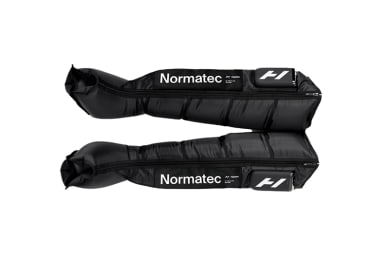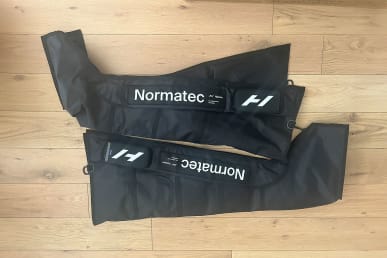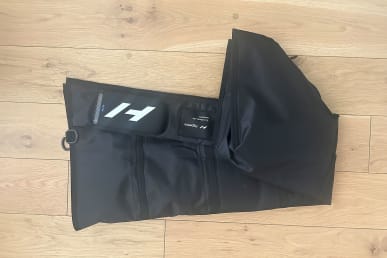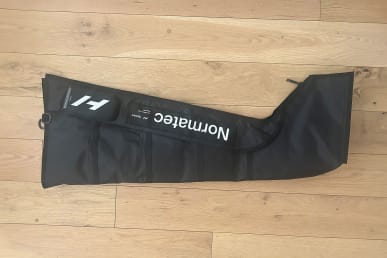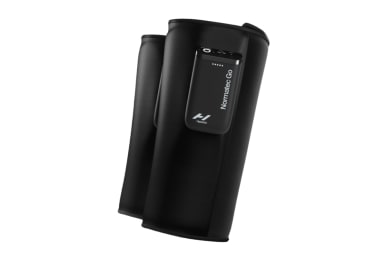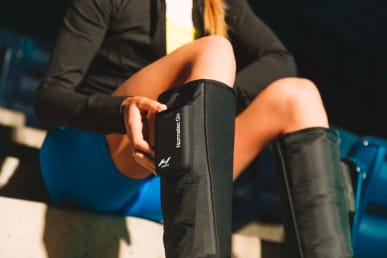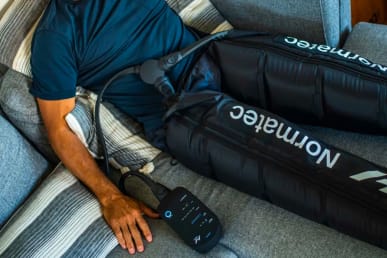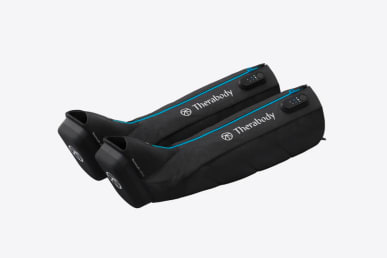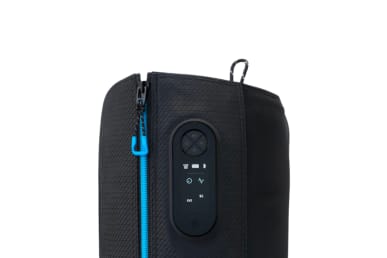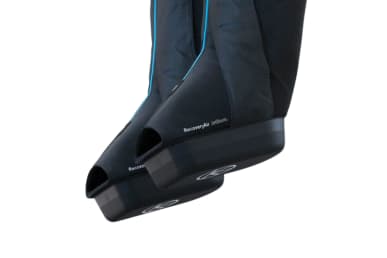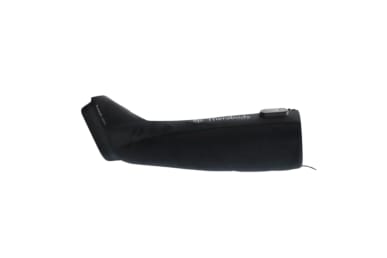Advertisement
4 Best Compression Boots To Speed Up Recovery, Tested By Fitness Editors

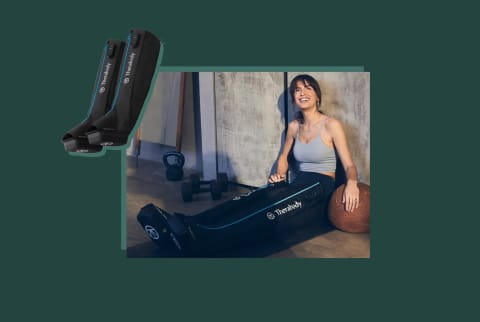
In the fast-paced world of fitness and athletics, recovery is just as important as the workouts themselves. Enter compression therapy—one of the most popular and effective methods for aiding recovery.
With benefits ranging from improved circulation to reduced muscle soreness and faster healing times, it's no wonder that compression therapy has become a staple for athletes, weekend warriors, and fitness enthusiasts alike.
At the forefront of this recovery revolution are compression boots, innovative devices that offer targeted compression to help you bounce back quicker and stronger.
While compression clothing like stockings is common, the effectiveness of compression boots surpasses traditional methods.
The best compression boots offer a versatile solution for a broader audience seeking enhanced recovery. But with numerous brands entering the market, making an informed choice is crucial.
After testing every pair ourselves, we've uncovered the best compression boots, everything you need to know about compression boots, and who might benefit from adding the high-tech recovery device to their routine.
Pros & Cons
Pros & Cons
Pros
Portable design and easy to store
7 adjustable compression levels with option to boost one zone at a time
Multiple sizes for a more comfortable fit
Cons
We wish the boots deflated quicker after use
These Normatec boots were created by Gilad Jacobs, M.D., and Ph.D., and the brand comes expert-recommended by Kasprowicz. The original Normatec boots have been spotted on a slew of professional athletes, including tennis star Naomi Osaka and basketball player Lebron James—and the brand's latest Elite model is the favorite of our marathon running editor, Carleigh Ferrante.
The Elite boots cover the full leg from thigh to toes, and the control unit is built into each boot (a major upgrade compared to the brand's corded design). You can choose to run the same settings on each boot, or choose different settings on each control unit.
We love that these boots offer a patented pulse technology, which gives a more precise therapy that targets specific zones with extra compression as desired.
While pricey at just under $1,000, these boots are well worth the investment if they fall into your budget. Alternatively, you could purchase the corded Normatec 3 Boots if portability isn't a priority and you want to save $200.
What our tester says: "Since adding them to my routine, my muscles are less sore and less inflamed—and my whole body feels more refreshed. Plus, I run significantly faster when I’m wearing my compression boots regularly. If something were to happen to my Normatec Elite boots, I’d purchase a replacement in a heartbeat." — Ferrante
Pros & Cons
Pros & Cons
Pros
Multiple sizes available
Preset treatments available
Easy-clean material
Cons
Fewer advanced features
Navigating the world of compression therapy can be a scary endeavor, but you can't go wrong with this pick from Theragun. It's the most simplified option from Theragun's lineup of compression boots—yep, there are multiple—all of which feature the brand's signature TruGrade Technology™.
This unique approach to compression therapy applies decreasing amounts of pressure as you go up the leg to encourage circulation. For example, if the foot starts at 80 mmHg of pressure, the knee will tap out around 77 mmHg.
Designed for an easy clean, especially if used after a sweaty workout, the boots can inflate (and deflate) in less than 60 seconds. Available in small, medium, and large, these boots are the most simplified model from the brand and one of its cheapest, although still in the mid-range of affordability at $699.
Pros & Cons
Pros & Cons
Pros
Good for isolating calves
Extremely portable design
Completely wireless
Cons
Won't help with full lower-body recovery
Difficult to wear while standing
Most compression therapy boots are bulky, making multitasking a no-go, but these wearable units break the status quo (and allow for greater flexibility in your recovery routine). Worn only on the calves, the devices feature individual control panels on each leg, which allow you to better customize your treatment.
Despite its smaller size, the portable pick still packs many of the same standout features of the full Normatec compression boots, such as three-hour battery life, 360-degree compression, app compatibility, and pulse technology. However, you can wear the device while sitting or standing, and they weigh just over 0.5 pounds each.
What our tester says: "I was pleasantly surprised by how much I loved wearing these boots during a normal workday. If last night's sweat session was just a little too intense, I'll slip these around my calves and select a level 5 compression. I found anything lower was simply too gentle, while anything higher hurts. My calves rarely get as tight as other body parts, so I've not noticed a huge difference in soreness post-treatment. However, the compression treatment feels just as good, if not better, than a massage. Sometimes I'll even pop them on when I'm not sore, just to relax."
Pros & Cons
Pros & Cons
Pros
Wireless
App compatibility
Easy-to-clean material
Cons
More expensive just because it's wireless
Fewer compression levels
If you're someone who finds cords extra annoying, then this Therabody model is just for you. It skips the abundance of wiring needed for most compression boots by incorporating internal pumps, which fully inflate (or deflate) in less than 60 seconds. While no cords equals faster relaxation—at least in our books–it also means you give up a few settings.
Unlike the original, it offers just four compression settings: 25, 50, 75, and 100 mmHG. However, the highest level of compression is the same as the brand's other offerings. Similarly, it also comes in four sizes, features an easy-to-clean interior, and packs a 240-minute battery life. And while features may feel limited now compared to some other models, new ones are launching soon for the Bluetooth-compatible boots in the Therabody app.
Comparing the best compression boots
| Product | Price | Compression Levels | Sizes | Body Part | Trial | Battery Life |
|---|---|---|---|---|---|---|
| Hyperice Normatec Elite | $099 | 7 | Short/Standard/Tall | Legs | N/A | 3 hours |
| Therabody RecoveryAir Prime | $699 | 9 | S/M/L | Legs | 60 days | 3 hours |
| Normatec Go | $399 | 7 | OS | Calves | 60 days | 3 hours |
| Therabody RecoveryAir JetBoots | $899 | 4 | S/M/L | Legs | N/A | 4 hours |
How we picked the best compression boots
- Compression: The optimal amount of compression for your recovery heavily depends on the person and area receiving the treatment. We opted for picks that all offer at least three levels of compression to ensure there's a treatment for all needs.
- Recommendations & reviews: We tapped our experts to provide their top picks from the market and then used customer reviews to better determine which boots are worth trying and which aren't.
- Features: Each pick included features a standout element that makes it worth a second glance—whether that's a completely wireless model, a gradient technology that applies pressure to encourage blood flow or a heating component.
- Price: Typically, compression boots cost a couple hundred dollars, but we tried to find options across the board to ensure this type of recovery tool isn't off-limits if you can't swing a $1,000 model.
So, what is compression therapy?
Compression therapy is a "treatment for pain and swelling caused by conditions associated with poor circulation," per the Cleveland Clinic. When an area is compressed, the accumulation of blood or fluid in that spot is prevented.
According to sports recovery specialist Joe Barthelemy, compression therapy is a great option for "high-level athletes, fitness enthusiasts, [and] individuals who stand all day for work (nurses, law enforcement, military personnel, teachers)." Because compression increases blood flow and circulation, it can speed up recovery from a tough workout or workday, he explains.
Another unlikely use for compression boots? Barthelemy says compression boots may also benefit individuals post-surgery with recovery.
Of course, we recommend always checking with your doctor before starting a new routine, especially post-op.
Summary
How do compression boots work?
Most commonly used by athletes to decrease recovery time and reduce pain, compression boots have slowly become a more popular recovery tool among a broader range of individuals. The devices use intermittent pneumatic compression (IPC) for treatment, which means compression boots use air to inflate and deflate, massaging your legs in the process.
Compression boots aim to remove the metabolic and lymphatic waste from your muscles, which usually takes the body at least a full day to do, according to New Jersey-based chiropractor and sports recovery specialist Jan Kasprowicz. That's because the lymphatic system, which is a network of vessels and other organs that keep your body fluids balanced, doesn't have a built-in pump, per a previous interview with health coach Ivonne Boujaoude, DNM.
Instead, the lymphatic system relies on movement for drainage. Adding a recovery tool, like compression boots, to your routine expedites this process, pushing lymphatic waste up your legs and into your lymph nodes to process and expel. (You might be familiar with a similar process in a lymphatic massage.)
Furthermore, research backs the benefits of using IPC to improve recovery times. A small 2013 study of student-athletes found an IPC device could remove lactic acid more effectively than passive recovery; another randomized trial found it was comparable to massage1 in lowering musical fatigue for ultramarathoners. Research2 also indicates that compression boots may be effective at reducing delayed-onset muscle soreness, but it is questionable whether compression boots can reduce exercise-induced muscle damage.
Ultimately, your workout routine and budget will be two of the biggest factors in deciding whether compression boots for recovery are a must for your routine.
Summary
Factors to consider when shopping for a compression boot
- Pressure level/intensity settings: Depending on the intensity of your training or activity, you may want a higher level of pressure. Measured in millimeters of mercury (mmHg), this intensity indicates how tightly the compression boots will squeeze your legs.
- Body parts: While these compression systems were picked for their capability to target legs and feet, some also offer attachments for hips and arms.
- Portability: Will you leave your system at home, or should it be small and light enough to take on the go?
- Price: Are you ready to invest in a higher-end product, or are you interested in testing out a cheaper one to start?
- Chambers: Devices with more air chambers allow for a more specialized and effective massage, which may be a must-have for some.
How do compression boots feel?
Although compression boots offer similar benefits to a massage, the actual effect feels quite different. In fact, most of our testers closely compared a compression boot treatment to having your blood pressure taken at the doctor's office.
The boot slowly inflates with air to compress the leg before gently releasing small spurts of air to offer immediate relief.
Our testers were surprised by how relaxing the treatment felt—as long as they didn't opt into the highest level of compression.
Just note that the intensity of a typical compression session can differ drastically based on the level of compression selected, so not all users will find the treatment to be as relaxing.
Frequently Asked Questions
What do compression boots do for athletes?
Compression boots can alleviate muscle fatigue and pain by aiding in recovery between workouts or training sessions.
Are leg compression boots worth it?
Compression boots can be a great fit if you are looking for a way to enhance your recovery routine and have the money to invest in a pair. However, compression boots won't make or break your recovery.
How long should you wear a compression boot?
You can wear your compression boots for up to 30 minutes. Most products contain programs that guide usage time.
Do compression boots help with swelling?
Compression boots should help with swelling by increasing blood flow and circulation, as well as limiting the accumulation of fluid.
Why are compression boots so expensive?
While compression boots can cost a pretty penny, research shows their efficacy in enhancing blood circulation and reducing muscle soreness. Their portability also requires intricate engineering for effective compression in a compact form. Moreover, the technology behind compression therapy involves custom algorithms and precise pressure control mechanisms, which can drive up production costs. This blend of scientific validation, portability demands, and advanced technology contributes to the higher price point of compression boots.
Meet the compression boot testers
Carleigh Ferrante, commerce editor
Carleigh Ferrante, commerce editor
Carleigh is a three-time world major marathon finisher who, after a decade of high-impact training, has learned to prioritize recovery as much as movement. Outdoor running is her form of meditation, but she loves checking out new fitness studios and at-home classes. Carleigh tested out the Hyperice Normatec Elite Legs as a way to boost her recovery and enhance her performance.
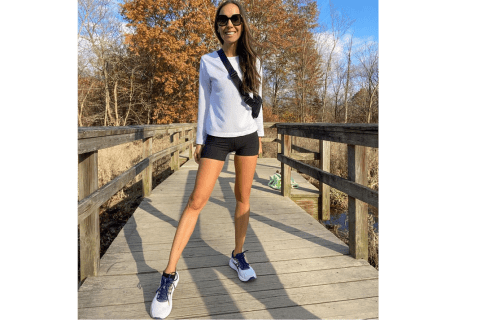
Braelyn Wood, deputy commerce editor
Braelyn is a Classpass enthusiast who prefers variety in her movement routine. When she's not running in the Red Room at Barry's or taking a reformer Pilates class at a local studio, you'll find her breaking a sweat at home using her Echelon bike. She tested out the Normatec Go as part of her regular recovery routine.
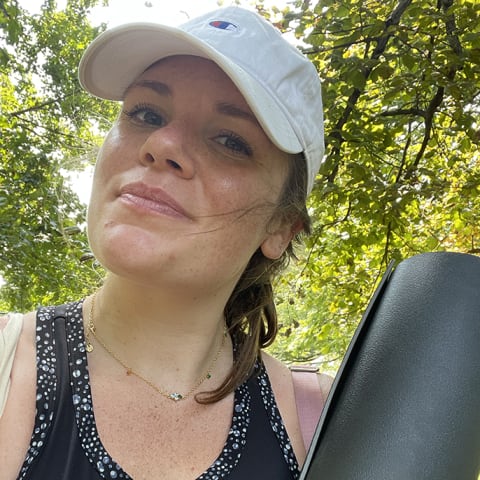
Andreas von Scheel, head of film & video production
Andreas is a triathlete who ran Track and Field at Villanova. Go Wildcats! He loves long runs in nature and open water swims. He recently became obsessed with indoor bike racing on Zwift—he dares you to come race him. To recover from long work outs he tested the Therabody Recovery AirJet Boots and RecoveryAir Prime.

The takeaway
People from all walks of life can benefit from the compression therapy that compression boots offer. Athletes and those involved in intense physical activity may find these products most beneficial due to their effectiveness at easing muscle soreness post-workout and aiding in recovery.
Regardless of your movement routine, rest and recovery are incredibly important for keeping your body functioning at its best. For more info on how to recover properly from exercise, see the simple fixes to the top five recovery mistakes.
